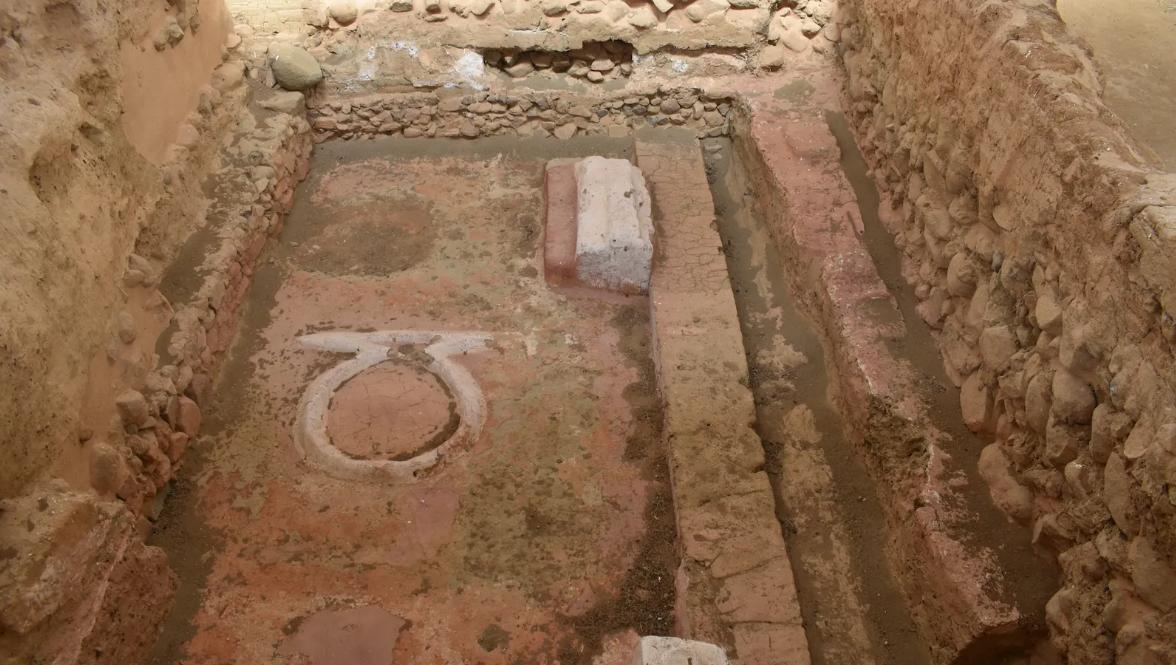
© Andrew Lofthouse via BBC News
Vocabulary
I will read the words, meanings, and sample sentences. Then, repeat after me.
- shroud /shroud/
- millennium /mi-LEN-ee-uhm/
- confluence /KON-floo-uhns/
- thriving /THRAHY-ving/
- palindromic /PA-luhn-drowm-ik/
[verb] – to hide something by covering or surrounding it
By eight o’clock, the mist that had been shrouding the valley was gone.
[noun] – a period of 1,000 years, or the time when a period of 1,000 years ends
The Earth’s position as the center of the universe has been widely acknowledged for millennia.
[noun] – a situation in which two things join or come together
A confluence of circumstances is bringing nuclear policy to public attention.
[adjective] – growing, developing, or being successful
Mike runs a thriving food store.
[adjective] – a word, verse, or sentence or a number that reads the same backward or forward
Some examples of palindromic words are “noon,” “level”, and “mom”.
Article reading
Please read the whole article. Then, I will check your pronunciation and intonation.
The ancient Iberian society of Tartessos, which flourished between the ninth and fifth centuries before the present, is shrouded in mystery and legend. But new information about the culture is being revealed by digs and technology.
Although Tartessos has been mentioned in Greek and Roman texts for millennia, it has been difficult for modern historians and archaeologists to determine what Tartessos actually was. Was it a city, a kingdom, or a river? Today, it is generally accepted that Tartessos was an Iberian Peninsula civilization that developed from a confluence of native inhabitants and Greek and Phoenician colonizers. It was also wealthy as a result of abundant metal resources and a thriving trading economy. Early finds led historians to believe that the Tartessos civilization was centered in and around the Guadalquivir Valley in Andaluca, but more recent discoveries in the Guadiana Valley, further to the west and close to Portugal’s border with Spain, have caused archaeologists to reconsider how widespread the Tartessos civilization actually was. A peculiar palindromic script that dates to roughly the eighth century BCE was found and is based on the Phoenician alphabet. It can be read either way, from right to left, albeit it’s still unclear what sounds each symbol denotes.
Even while it’s crucial to understand why the civilization vanished, the Tartessos’ social and cultural effects are the subject of most recent studies. Sebastián Celestino Pérez, a scientific investigator at the Institute of Archaeology in Merida, said that “the so-called Tartessian tombs of the Guadiana seem to have the key to know this culture better.”
Although Tartessos has been mentioned in Greek and Roman texts for millennia, it has been difficult for modern historians and archaeologists to determine what Tartessos actually was. Was it a city, a kingdom, or a river? Today, it is generally accepted that Tartessos was an Iberian Peninsula civilization that developed from a confluence of native inhabitants and Greek and Phoenician colonizers. It was also wealthy as a result of abundant metal resources and a thriving trading economy. Early finds led historians to believe that the Tartessos civilization was centered in and around the Guadalquivir Valley in Andaluca, but more recent discoveries in the Guadiana Valley, further to the west and close to Portugal’s border with Spain, have caused archaeologists to reconsider how widespread the Tartessos civilization actually was. A peculiar palindromic script that dates to roughly the eighth century BCE was found and is based on the Phoenician alphabet. It can be read either way, from right to left, albeit it’s still unclear what sounds each symbol denotes.
Even while it’s crucial to understand why the civilization vanished, the Tartessos’ social and cultural effects are the subject of most recent studies. Sebastián Celestino Pérez, a scientific investigator at the Institute of Archaeology in Merida, said that “the so-called Tartessian tombs of the Guadiana seem to have the key to know this culture better.”
Discussion Questions
I will read each question. Then, please answer them.
- Are there any ancient monuments in your country? Please tell me more about them.
- What kinds of historical sites can you see close to where you live?
- What ancient ruins would you like to visit? Why?
- Do you think old buildings and monuments are more beautiful than modern ones?
- In your opinion, why do some civilizations seem to disappear mysteriously?
Summarization
Please summarize the whole article using your own words and expressions. You will have one minute to prepare before you answer.
Describe
Please explain the definition of each word listed below based on your understanding. You can provide example sentences if needed.
- flourish
- archaeologist
- abundant
- denote
- crucial